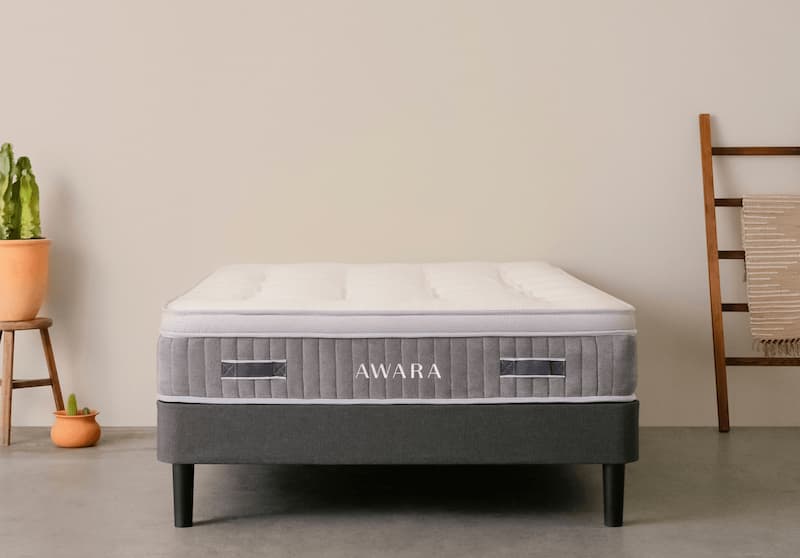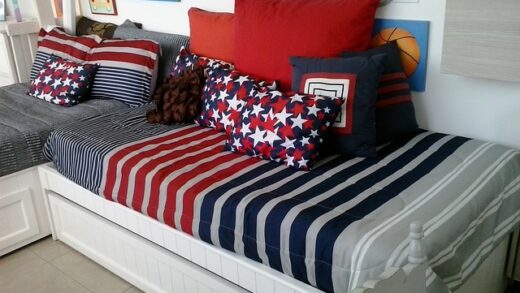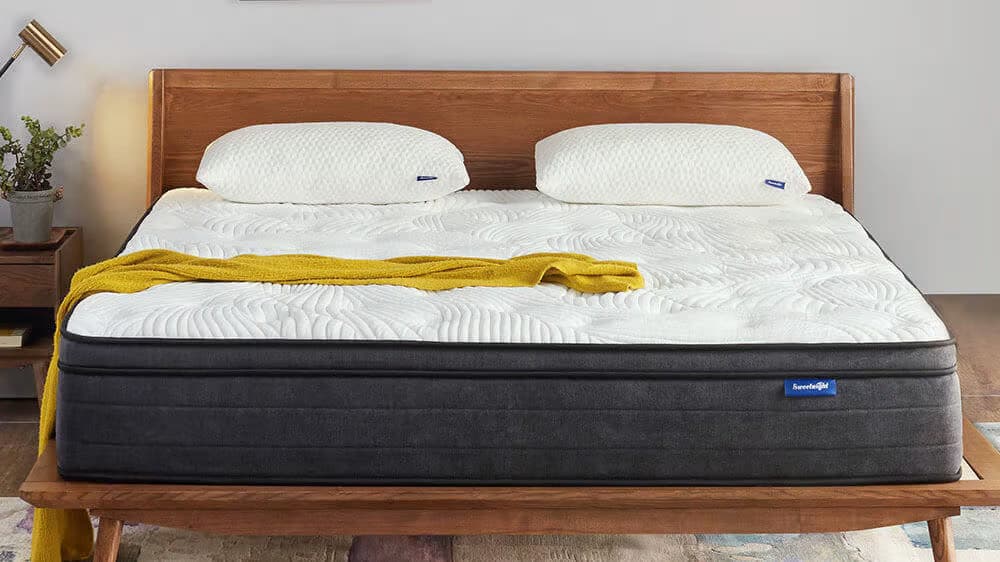What is a Daybed? All You Want to Know

One of the best pieces of furniture with multiple uses for your home is a daybed. What is a daybed? Read on to find out more about this different type of bed, how to incorporate one into your house, and some of our favorite styling advice for daybeds.
A daybed combines the functions of a sofa and a bed, making it a practical option for small-space living. When not in use, a daybed can be decorated with decorative pillows and throw blankets to make your room appear more like a living room than a bedroom.
Daybeds are as wide as twin beds, making them extra deep and downright delectable to curl up on when used as a sofa. Small bedrooms and apartments are ideal for daybeds if you don’t want to go the murphy bed or loft bed route.
Table of Contents
What is a Daybed?
The majority of daybeds are designed to fit a mattress that is 38 inches wide by 75 inches long, which is the standard twin size. Some daybeds are bigger and made to fit a full size mattress, which has dimensions of 54 inches wide by 75 inches long, though they are less common.
Due to their three sides, daybeds resemble sofas in both appearance and feel. The term “bed, couch, and chaise longue” is frequently used to describe them. The height of the majority of daybeds ranges between 9 and 14 inches; this is the measurement from the ground to the top of the mattress. However, the frame’s height can range from 22 to 28 inches.
A daybed with a twin-size mattress has a depth of 38 inches. Daybeds are significantly deeper than most couches, which typically range in depth from 18 to 22 inches. To make a seating area with the depth of a couch, throw pillows are positioned along the back of the daybed frame.
With a foundation to support the mattress, daybeds are frequently made of either wood or metal. A foundation made of link springs is the most typical kind of mattress support for a daybed. Wires run both vertically and horizontally in this grid-like structure. A sturdy, secure base that replaces a conventional box spring is made from these wires attached to four side panels by springs.
A slatted mattress foundation rather than a link spring is used in some daybeds. Typically, these slats are 2 to 2.75 inches apart and made of wood or metal.

Advantages of a Daybed
Daybeds range from rustic to modern in style, are reasonably priced, and are available in a variety of sizes. The reasons why a daybed might be ideal for your living space are outlined below.
- Extra sleeping space:For sleepovers or to accommodate out-of-town guests, a daybed with a trundle is ideal for a teenager’s room or a spare bedroom.
- Studio apartment:A daybed can be utilized as a couch during the day and a bed at night if you live in a small apartment where your living room also serves as your bedroom.
- In an office/den:A daybed can be used as a sofa in an office setting, and the trundle can be extended for visitors. In the absence of a trundle mattress, the extra room under the bed can be put to storage use.
Different Types of Daybeds
A variety of daybeds are available. Some take the shape of an extra deep bench, which gives your house a decidedly European feel. Others are more conventional and have a back and arms. They can be used in a variety of spaces, including the den and home office, the living room, the porch, the balcony, or the patio.
Popular types of daybeds include the following:
- Daybed with Built-In Trundle. This kind of daybed has a second twin-sized bed that slides out from underneath. It is an incredible space saver and ideal for multiple overnight guests or siblings.
- Outdoor Daybed. With the right care, this kind of daybed can withstand wind, rain, and snow thanks to its weather-resistant fabrics. Your outdoor daybed mattress will last longer if it is stored properly.
- Daybed With Storage Space. Instead of a second bed, look for a daybed with storage drawers underneath for extra space to store items and linens.
- Daybed Couch. Some daybeds often resemble beds, while others seamlessly pass for couches. If you only occasionally plan to use your daybed as a place to sleep, you might want to look for one that resembles a couch more.




How to Use a Daybed?
Find a daybed that is cozy for lounging if you intend to use it mostly as a sofa. Perhaps you should look into a three-sided, upholstered daybed. Your daybed can feel like a conventional couch with the addition of button tufting, nailhead trim, or a faux leather surface.
If your daybed is in a guest bedroom, you might want to skip the upholstery and go with a metal daybed frame instead. To increase comfort, place a sheet over the mattress and place extra pillows on the backrest.
The majority of daybeds feature a twin-size mattress—full-size and queen-size daybeds are far less practical as sofas since their seats are so deep. Utilize twin-sized daybeds for living areas and larger daybeds for separate sleeping areas.
Where Should You Put Your Daybed?
A daybed can be positioned nearly anywhere because of its versatility, including areas where a full-size bed or sofa would not fit. Daybeds are a fantastic option for studio apartments and smaller condos. A daybed can be used as a couch in the living room if you don’t have a guest room. It will give visitors a comfortable place to sit during the day and extra sleeping space for them to use at night. Using your daybed as an alternative bed for children is a popular alternative. Your teenagers will adore it for its originality, simplicity, and suitability for hanging out with friends. An outdoor daybed is perfect for unwinding in your backyard, on your deck or patio, or in your sunroom.
How to Decorate a Daybed?
The most exciting part—decorating—can start once you’ve decided where you want to keep your daybed. Before beginning, take a look at some of our favorite styling and decorating advice below.
Select the Frame
There are many options to choose from when selecting a daybed frame, just like there are for a bed or a sofa. One of the most popular options is an upholstered fabric frame, but solid wood, wicker, or metal frames also look great.
Add Throw Pillows
On your daybed, throw pillows can reside permanently. Adding a variety of chic and cozy throw pillows to your daybed is the simplest way to decorate it. Provide a comfortable backrest for any sitting guests while simultaneously curating your look with various patterns and colors.
Make It Cozy With Blankets
Add a second layer of warmth and style to your pillows to highlight them. This extra sleeping area is perfect for seasonal trends thanks to throw blankets. You desire the atmosphere of your home to alter with the seasons. Layer chunky knit blankets for fall, thermal blankets for winter, woven blankets for spring, and beach blankets for summer. Keep a daybed comforter hidden away for guests to use if you have storage space.
Invest in a Slipcover
The purchase of a slipcover or bedding set is an additional simple way to decorate your daybed. With these reasonably priced coverings, you can change the look of your daybed whenever the mood strikes while safeguarding your furniture from spills and stains.
Daybeds, Trundle Beds, Sofa Beds, and Futons: What’s the Difference?
When it comes to space-saving sleeping arrangements, today’s buyers have multiple options:
- Daybed: A daybed is a cross between a couch and a bed. It doesn’t have any moving parts, and a twin-size mattress on slats or a platform is typically included. A memory foam mattress will provide too much sink when used as a couch, so spring mattresses work best for daybeds.
- Trundle bed: A trundle bed combines two beds into one: one mattress slides under the frame of the other. Trundle bunk beds offer expanded sleeping in a child’s room, while roll-out and pull-out trundles are good for maximizing small spaces.
- Sofa bed: A sofa bed functions as both a couch and a bed, like a daybed. A sofa bed, on the other hand, has adjustable moving parts that allow its surface to be flat for sleeping or angled for sitting. Daybeds make better sleeping spaces because they can accommodate premium mattresses that do not fold, whereas sofa beds typically make better couches.
- Futon: An uncomplicated sofa bed is a futon. When the mattress is being used as a sofa, one side serves as the seat and the other as the backrest. The futon can be flattened so that the entire sleeping surface is level. Both wood and metal frames are available for futons.



Conclusion on Daybeds
Daybeds are renowned for their appealing, practical design that serves as both a sofa and a bed. The headboard typically runs along one side of the day bed rather than just the head of the bed, which makes most day beds significantly different from typical beds. However, other mattress sizes, such as a double XL, a double, a double, or even a king-size, can be ordered. Sunbeds are typically the size of a double bed. The sofa bed appears to be half a sofa and half a bed as a result.
Frequently Asked Questions
Does a Daybed Need Special Bedding?
Daybeds don’t necessarily require special bedding; regular twin-sized comforters will fit one. The three sides of the daybed frame can, however, be accommodated by some bedspreads. For the comforter to lay flat and prevent bunching in the frame, daybed bedding typically has slits on each corner.
Why is It Called a Daybed?
The term “daybed” traditionally applied to sofas and chaise lounges used for socializing during the day. The term is now used to describe these bed frames because modern daybeds can be utilized in a manner similar to that of a daybed. A trundle bed may be referred to as such if it has one.
Does a Daybed Need a Box Spring?
You shouldn’t put a box spring on a daybed, in fact. The traditional link spring foundation might not be able to support a box spring and mattress because of their weight. Daybeds also typically sit higher than most bed frames to make room for the trundle mattress. The mattress might be placed on the frame too high if a box spring is added.
Can You Use a Memory Foam Mattress on a Daybed?
To avoid sagging, a memory foam mattress needs a solid base. The safest place for a memory foam mattress is a daybed with wooden or metal slats that are 2.75 inches or less apart.
The soft memory foam may, however, sink in a daybed with a link spring, leaving indentations that alter the support of the mattress. If a link spring daybed is something you’re thinking about, it works best when paired with a hybrid mattress that has a strong spring coil base to prevent sagging.


















![Therapedic Mattress Reviews Buy Or Avoid [2022]](https://www.myspacebeds.com/wp-content/uploads/2022/10/Therapedic-Mattress-Reviews-Buy-Or-Avoid-2022-520x293.jpeg)
![Serta Arctic Mattress Reviews In 2022 [Updated] Should You Buy It Or Not](https://www.myspacebeds.com/wp-content/uploads/2022/09/Serta-Arctic-Mattress-Reviews-In-2022-Updated-Should-You-Buy-It-Or-Not-2.jpg)

